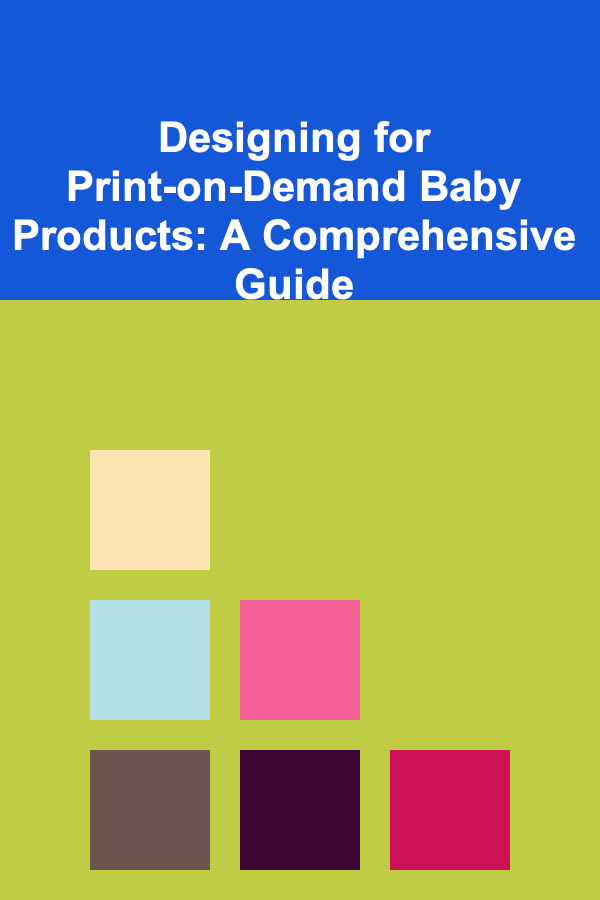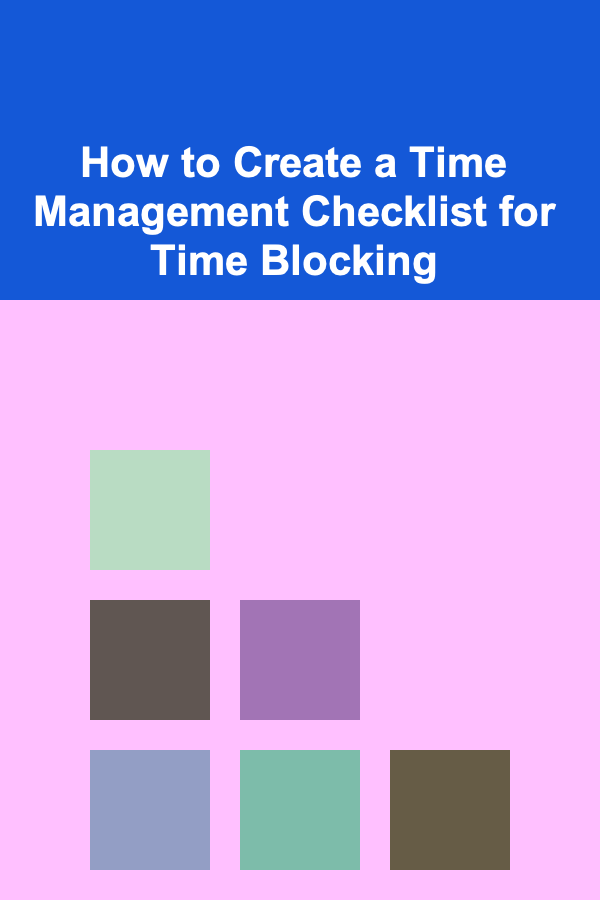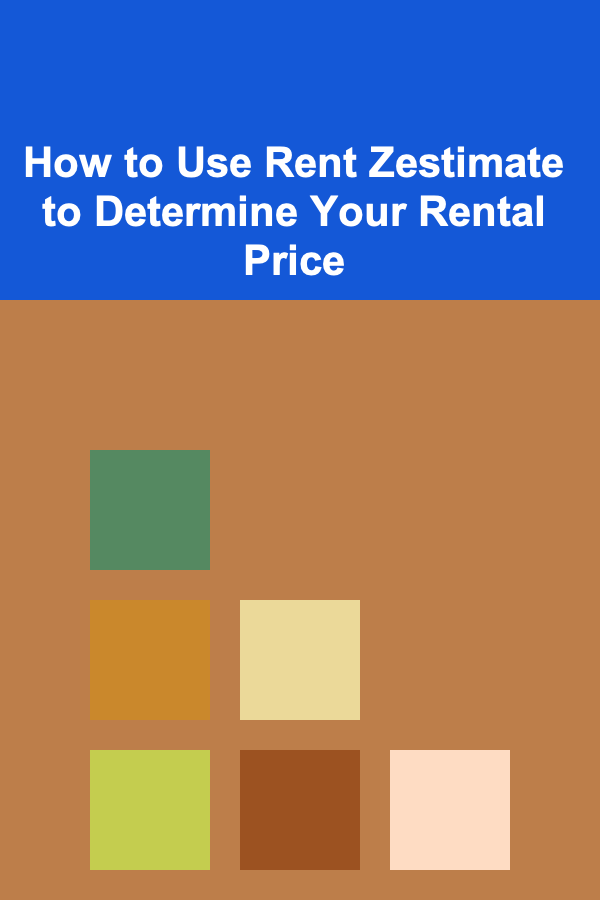
Designing for Print-on-Demand Baby Products: A Comprehensive Guide
ebook include PDF & Audio bundle (Micro Guide)
$12.99$8.99
Limited Time Offer! Order within the next:

The world of Print-on-Demand (POD) offers a fantastic avenue for creative entrepreneurs to design and sell products without the burden of managing inventory. The baby product market, in particular, is ripe with opportunity, as parents are always looking for unique, adorable, and practical items for their little ones. However, succeeding in this market requires more than just pretty pictures. It demands careful consideration of design principles, product safety, market trends, and effective marketing strategies. This comprehensive guide will walk you through the essential steps to create compelling designs for POD baby products.
Understanding the Baby Product Market
Before diving into the design process, it's crucial to understand the nuances of the baby product market. Parents prioritize certain factors when purchasing items for their children, which directly impacts design choices.
Key Considerations for Parents:
- Safety: This is paramount. Materials must be non-toxic, designs should avoid small parts that could be choking hazards, and overall construction must be durable and safe for infants and toddlers.
- Functionality: Baby products should be practical and serve a purpose. Diaper bags need ample storage, bibs need to be absorbent, and clothing needs to be easy to put on and take off.
- Comfort: Soft, breathable materials are essential for baby clothing and bedding. Avoid rough textures or irritating embellishments.
- Durability: Babies are messy! Products need to withstand frequent washing and wear and tear.
- Aesthetics: While not the primary concern, parents appreciate visually appealing designs that complement their personal style and the nursery decor. Trends are constantly evolving.
- Price: Parents are often budget-conscious, especially with the numerous expenses associated with raising a child. Pricing should be competitive and reflect the value of the product.
Popular Baby Product Categories for POD:
- Clothing: Onesies, t-shirts, pajamas, hats, and leggings.
- Accessories: Bibs, burp cloths, blankets, swaddles, and changing pads.
- Nursery Decor: Wall art, crib sheets, curtains, and rugs.
- Gifts: Personalized items, milestone blankets, and gift sets.
Market Research: Identifying Trends and Niches
Thorough market research is essential for identifying profitable niches and understanding current trends. Consider the following strategies:
- Etsy Trend Analysis: Explore popular baby product categories on Etsy to identify trending designs, color palettes, and themes. Pay attention to best-selling items and customer reviews.
- Social Media Monitoring: Follow baby-related influencers, parenting blogs, and popular baby product brands on platforms like Instagram, Pinterest, and Facebook. Observe what designs are generating engagement and interest.
- Keyword Research: Use tools like Google Keyword Planner, Ahrefs, or SEMrush to identify relevant keywords with high search volume and low competition. Examples include "organic baby clothes," "personalized baby blanket," or "boho nursery decor."
- Competitor Analysis: Analyze the product offerings, pricing strategies, and marketing tactics of your competitors. Identify areas where you can differentiate your designs and offer unique value.
- Staying Updated: Parenting trends change constantly. Stay abreast of current parenting styles (e.g., attachment parenting, conscious parenting), developmental milestones, and popular children's books and characters.
Designing with Safety and Compliance in Mind
Safety is non-negotiable when designing for baby products. You must adhere to relevant safety standards and regulations to protect your customers and avoid potential legal issues.
Key Safety Considerations:
- Material Safety: Use only non-toxic, baby-safe materials for your designs. This includes fabrics, inks, and any embellishments. Look for certifications like Oeko-Tex Standard 100, which ensures that materials are free from harmful substances.
- Choking Hazards: Avoid small parts, loose buttons, ribbons, or other embellishments that could pose a choking hazard for infants and toddlers.
- Design Placement: Be mindful of where you place designs on clothing and accessories. Avoid placing designs near the neck or face, where they could cause irritation or pose a safety risk.
- Secure Attachment: Ensure that any appliqués, embroidery, or other embellishments are securely attached to the fabric to prevent them from detaching and becoming choking hazards.
- Drawstrings and Cords: Avoid drawstrings and cords on baby clothing, as they can pose a strangulation risk.
- Regulatory Compliance: Research and comply with relevant safety standards and regulations, such as the Consumer Product Safety Improvement Act (CPSIA) in the United States. Consider age guidelines for products.
Working with Print-on-Demand Providers:
Choose POD providers that prioritize safety and offer products that meet relevant safety standards. Inquire about their sourcing practices, material certifications, and quality control measures. Reputable providers will readily provide this information.
Tip: Consider adding a disclaimer to your product listings stating that parents should always supervise their children while using the product and that you are not liable for any injuries that may occur.
Creative Design Principles for Baby Products
While safety is paramount, aesthetics also play a crucial role in attracting customers. Here are some key design principles to consider when creating designs for baby products:
Color Palette:
- Soft and Muted Tones: Pastel colors, muted earth tones, and soft neutrals are often preferred for baby products, as they create a calming and soothing atmosphere.
- Gender-Neutral Colors: Consider using gender-neutral color palettes to appeal to a wider audience. Greens, yellows, grays, and creams are popular choices.
- Accent Colors: Use pops of brighter colors sparingly to add visual interest without overwhelming the overall design.
- Color Psychology: Understand the emotional associations of different colors. Blue is often associated with calmness and trust, while yellow is associated with happiness and energy.
Illustrations and Graphics:
- Cute and Whimsical Characters: Adorable animals, friendly monsters, and whimsical creatures are always a hit with babies and parents.
- Simple and Clean Designs: Avoid overly complex or cluttered designs. Simple, clean illustrations are more visually appealing and easier for babies to focus on.
- Educational Elements: Incorporate educational elements, such as letters, numbers, shapes, or animals, to make the design both fun and informative.
- Repeat Patterns: Create repeating patterns with cute motifs to add visual interest and texture to your designs.
- Hand-Drawn Aesthetics: Hand-drawn illustrations and lettering can add a personal and charming touch to your designs.
Typography:
- Easy-to-Read Fonts: Choose fonts that are easy to read and understand, especially for designs that include text. Avoid overly stylized or decorative fonts.
- Playful Font Choices: Consider using playful and whimsical fonts that complement the overall design aesthetic.
- Appropriate Font Size: Ensure that the font size is large enough to be easily legible, even on small items like bibs or onesies.
- Avoid Offensive Language: This is a general consideration, but make sure your typography doesn't unintentionally create words or phrases that could be deemed offensive.
Personalization:
Personalized baby products are incredibly popular, as they make unique and memorable gifts. Consider offering designs that can be customized with the baby's name, birthdate, or other special details.
- Name Integration: Seamlessly integrate the baby's name into the design in a visually appealing way.
- Birthdate Customization: Allow customers to add the baby's birthdate to create a truly personalized keepsake.
- Monogram Designs: Offer monogram designs that feature the baby's initials.
- Photo Integration: If possible, explore designs that allow customers to upload a photo of the baby. (This may require specialized POD providers).
Themes and Trends:
Staying up-to-date with current trends is essential for creating designs that resonate with parents. Consider incorporating popular themes and trends into your designs.
- Boho Chic: Incorporate elements like macrame, feathers, and natural textures for a bohemian-inspired look.
- Minimalist Designs: Embrace clean lines, simple shapes, and neutral colors for a minimalist aesthetic.
- Scandinavian Style: Opt for simple, functional designs with a focus on natural materials and muted colors.
- Nature-Inspired Designs: Feature elements like leaves, trees, animals, and flowers for a nature-inspired theme.
- Montessori-Inspired: Consider designs that promote learning and development, aligned with the Montessori philosophy (e.g., simple shapes, tactile textures).
Technical Considerations for Print-on-Demand
Creating visually appealing designs is only half the battle. You also need to ensure that your designs are technically sound and optimized for print-on-demand production.
File Formats and Resolution:
- Vector Graphics: Vector graphics are ideal for print-on-demand designs, as they can be scaled to any size without losing quality. Common vector formats include AI, EPS, and SVG.
- Raster Graphics: If you're using raster graphics (e.g., photographs or digital paintings), ensure that they have a high resolution (at least 300 DPI) to prevent pixelation. Common raster formats include JPG, PNG, and TIFF.
- Transparency: Use transparent backgrounds for designs that will be printed on colored fabrics or backgrounds. PNG is a good format for preserving transparency.
Color Modes:
- CMYK: Use the CMYK color mode for designs that will be printed on physical products. CMYK is the standard color mode for printing, and it ensures that the colors in your design will be accurately reproduced.
- RGB: RGB is used for digital displays. Converting from RGB to CMYK can sometimes result in slight color variations, so designing directly in CMYK is preferable.
Print Areas and Mockups:
- Understand Print Areas: Each POD provider will have specific print areas for their products. Download templates from your provider's website to ensure that your designs fit properly and are correctly positioned.
- Create Mockups: Use mockups to visualize how your designs will look on the finished product. This allows you to make adjustments and ensure that the design is aesthetically pleasing. Many POD providers offer mockup generators or you can use external tools like Placeit or Canva.
Bleed Area:
- Add Bleed: If your design extends to the edge of the product, add a bleed area of at least 0.125 inches (3mm) around the design. This ensures that the design will be printed to the edge of the product without any white borders.
File Size:
- Optimize File Size: Large file sizes can slow down the upload process and potentially cause issues with printing. Optimize your files by compressing images and removing unnecessary layers.
Choosing the Right Print-on-Demand Provider
Selecting the right POD provider is crucial for the success of your baby product business. Consider the following factors when making your decision:
- Product Selection: Does the provider offer the types of baby products you want to sell?
- Print Quality: Request samples to assess the print quality and color accuracy.
- Shipping Speed: Fast and reliable shipping is essential for customer satisfaction.
- Customer Service: Choose a provider with responsive and helpful customer service.
- Pricing: Compare pricing across different providers to find the best balance between cost and quality.
- Integration: Does the provider integrate with your chosen e-commerce platform (e.g., Shopify, Etsy)?
- Ethical Sourcing and Sustainability: If ethical sourcing and sustainability are important to you, research the provider's practices.
Popular POD providers for baby products include:
- Printful
- Printify
- Gooten
- Gelato
- SPOD (Spreadshirt Print-on-Demand)
Marketing Your POD Baby Products
Creating great designs is only the first step. You also need to effectively market your products to reach your target audience.
E-commerce Platform Optimization:
- Compelling Product Descriptions: Write detailed and engaging product descriptions that highlight the features, benefits, and safety aspects of your products.
- High-Quality Product Images: Use professional-quality product images that showcase your designs in the best possible light.
- SEO Optimization: Optimize your product listings with relevant keywords to improve search engine visibility.
- Customer Reviews: Encourage customers to leave reviews to build trust and credibility.
Social Media Marketing:
- Targeted Advertising: Use social media advertising to reach potential customers based on their demographics, interests, and behaviors.
- Influencer Marketing: Partner with baby-related influencers to promote your products to their audience.
- Engaging Content: Create engaging content that showcases your designs and connects with your target audience. This could include photos, videos, blog posts, and behind-the-scenes glimpses of your design process.
- Run Contests and Giveaways: Host contests and giveaways to generate excitement and increase brand awareness.
Email Marketing:
- Build an Email List: Collect email addresses from your website visitors and social media followers.
- Send Targeted Emails: Segment your email list and send targeted emails based on customer interests and purchase history.
- Offer Exclusive Discounts and Promotions: Reward your email subscribers with exclusive discounts and promotions.
Paid Advertising:
- Google Ads: Use Google Ads to target potential customers who are searching for specific baby products.
- Social Media Ads: Use social media ads to reach a wider audience and drive traffic to your e-commerce store.
Conclusion
Designing for print-on-demand baby products requires a blend of creativity, technical expertise, and market awareness. By understanding the needs and priorities of parents, adhering to safety standards, embracing current trends, and implementing effective marketing strategies, you can create a successful POD baby product business. Remember to continuously analyze your results, adapt to changing trends, and prioritize customer satisfaction to build a loyal following and achieve long-term growth. Good luck!

How to Build a Family Emergency Plan: A Step-by-Step Checklist
Read More
How to Create a Time Management Checklist for Time Blocking
Read More
How to Enrich Your Pet's Environment with DIY Toys
Read More
How to Improve Home Security on a Budget Without Compromising Safety
Read More
How to Use Rent Zestimate to Determine Your Rental Price
Read More
How To Explore the Truth Behind Ancient Alien Theories
Read MoreOther Products

How to Build a Family Emergency Plan: A Step-by-Step Checklist
Read More
How to Create a Time Management Checklist for Time Blocking
Read More
How to Enrich Your Pet's Environment with DIY Toys
Read More
How to Improve Home Security on a Budget Without Compromising Safety
Read More
How to Use Rent Zestimate to Determine Your Rental Price
Read More